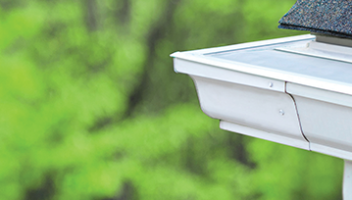7 Winter Safety Tips

Winter Safety Tips For Your Driveway, Sidewalks, and Home
Here are 7 ice and snow clean up safety tips you can use at home to keep your driveway and sidewalk clear of ice and snow this winter. Those of us living in States that have seasons can expect winter to pick up steam. This time of the year has some pros and cons. The scenery associated with a fresh snowfall can be beautiful. And those of us who ski and snowboard can start scouting the conditions. You might want to dig around the basement or the attic to try to find your old ice skates. The thing about ice-skating is that you want to make sure you’re doing it on a rink or pond, not your driveway or sidewalk. On to winter safety tips!
Winter Safety Tips – #1: Be Proactive!
When the snow starts falling, GET ON IT RIGHT AWAY. Be proactive! This is one of the most annoying of our winter safety tips, but probably the most important. If snow starts falling after the sun goes down, it’s all but a guarantee that the snow will be frozen by the next morning. Make sure you’re proactive with your snow clean up before it has the chance to freeze over. An hour worth of shoveling right away will save you several hours of breaking up ice later.
Winter Safety Tips – #2: Direct Water from Your Roof
Make sure your gutters are in good shape, clean-clear, and channeling water runoff from your roof and away from your sidewalks and driveway. Believe it or not, the architecture on certain homes actually has the rain runoff going straight onto the sidewalk. Rather than altering your roof or dormers, you can usually just re-pitch your gutters.
Winter Safety Tips – #3: Divert Water Away from Your House
Most homes aren’t built on perfectly flat ground. Because water seeks its own level, you want to have your driveway at its highest point where it connects to the house. This will help you divert water away from your house to ensure the water doesn’t pool up and later freeze. The ice build-up cause serious damage to your home.
Winter Safety Tips – #4: Clear Out All the Leaves
Because this autumn was relatively warm, some trees still have a few leaves on them. As they fall, make sure they are all clear from your sidewalks and driveway before the weather dips below freezing. When wet leaves freeze they can clump together. Cleaning these clumps is a much larger chore (and potentially dangerous due to the slipping hazard), than it would have been if you had taken care of them while they were dry.
Winter Safety Tips – #5: Have Bags of Salt and Sand Ready
You can buy buckets of road salt or even bags of water softener salt for reasonably cheap, but many stores will increase their prices after the snow starts falling. In serious storms, many stores will likely be sold out. Stocking up now is one of the best winter safety tips we can make. Salting your sidewalks and driveway isn’t a magical fix, but it will definitely speed up the melting process and help reduce your ice and snow clean up later.
Winter Safety Tips – #6: Have the Right Tools On-hand
If you don’t have a decent shovel and a metal icebreaker, you’re setting up for a long, labor-intensive winter. Just like the salt and sand, don’t wait until the last minute to get these. It doesn’t take long for a small crack in a shovel to turn into a large problem when you are trying to work on a ice and snow cleanup project.
Winter Safety Tips – #7: Keep Piles of Snow and Ice Away From Your Driveway and Sidewalks
Whether you shovel, snow-blow, or have somebody plow your driveway, make sure you keep the piles of snow as far away from your driveway as possible. Even if the temperature is below freezing, huge mounds of snow will melt during the daytime when the sun hits them. That snowmelt will run down the driveway and refreeze overnight after the sun goes down leaving you with dangerous amounts of ice in your driveway. If you keep the snow piles in the yard, the refreezing snowmelt won’t affect your driveway or sidewalks.


